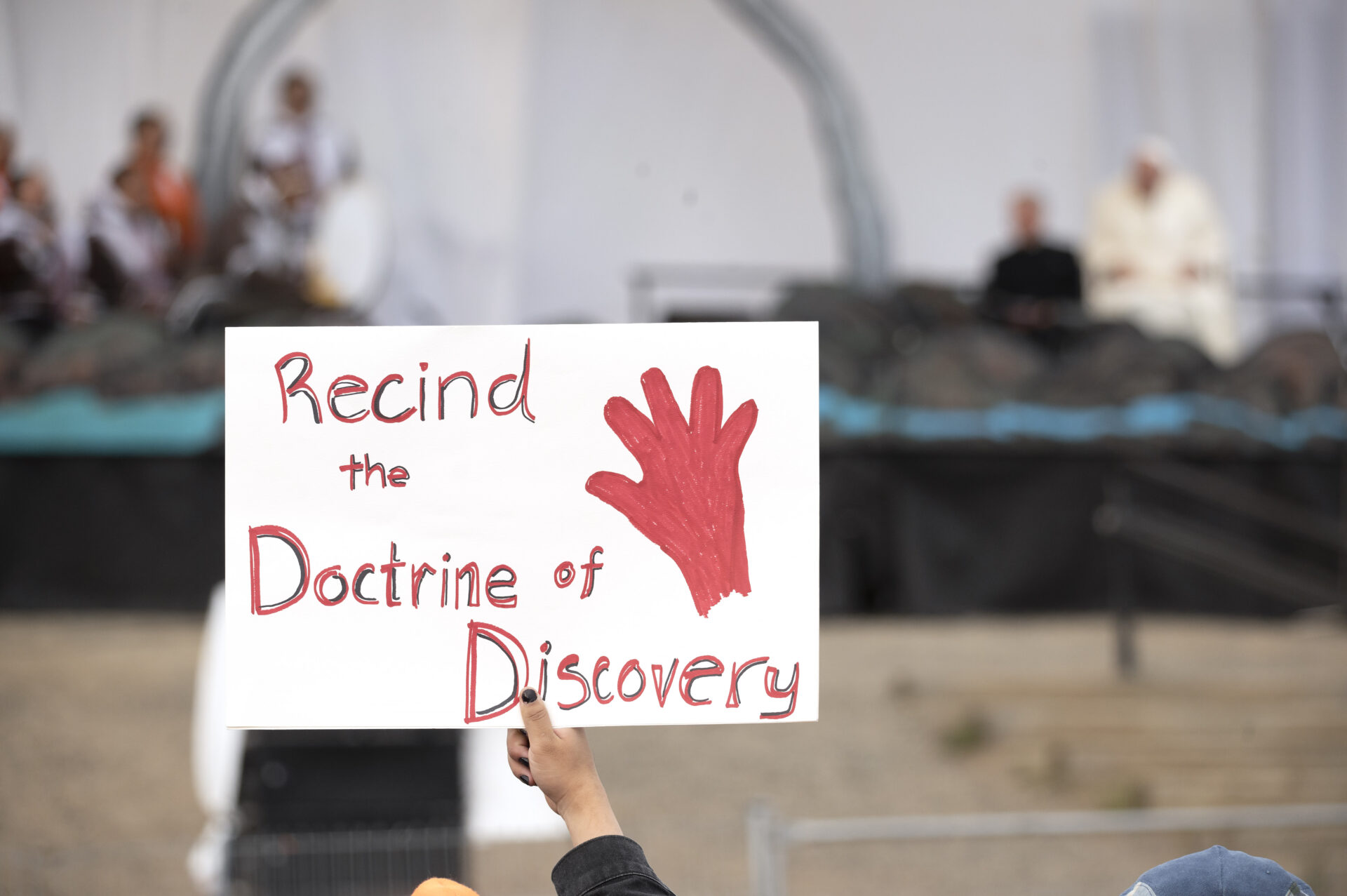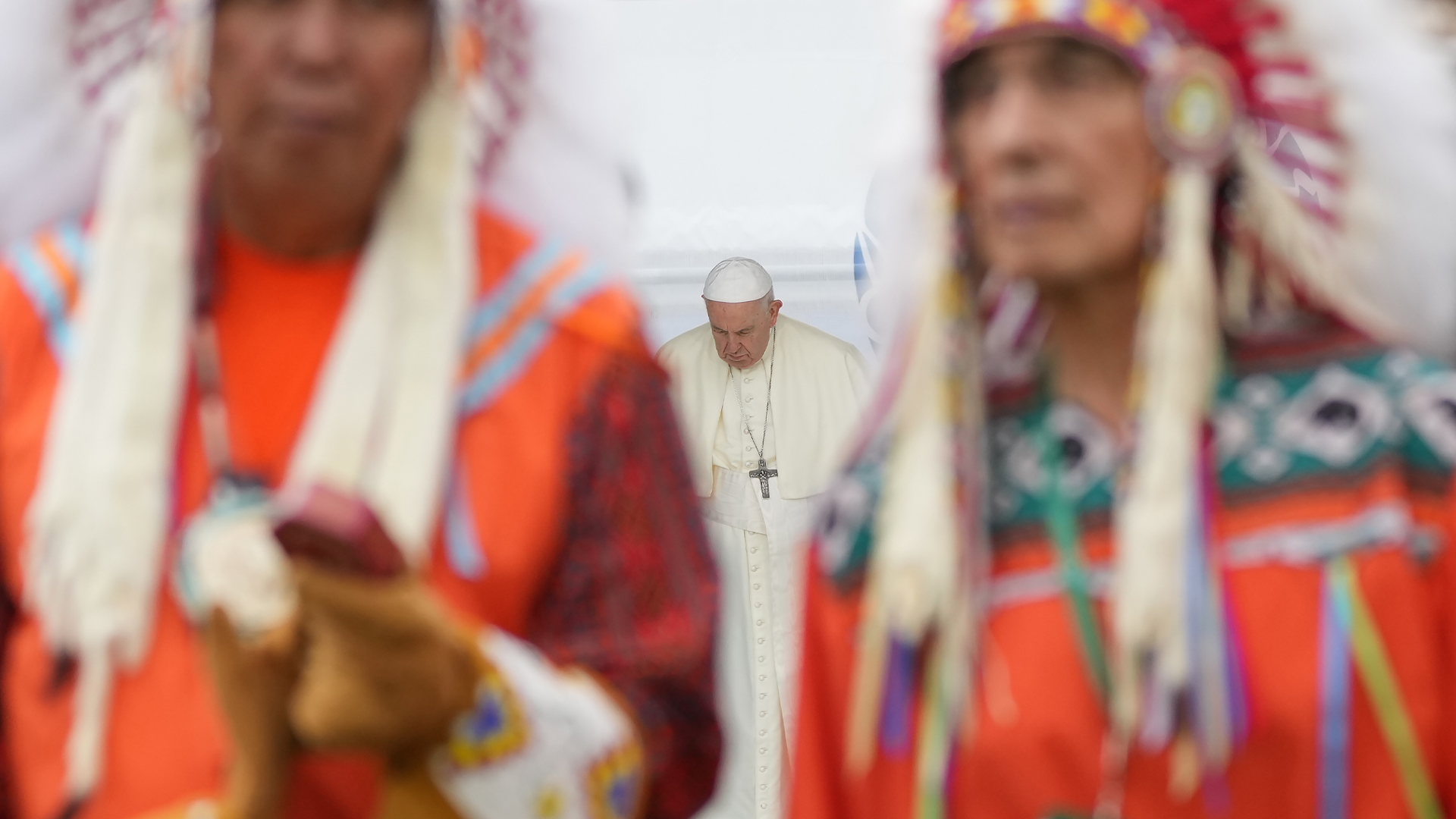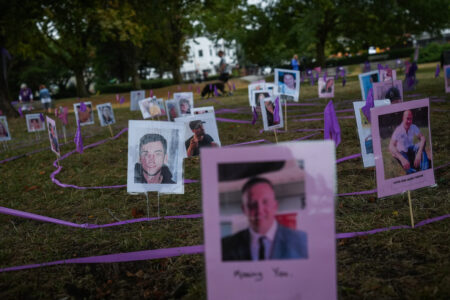
When I was growing up in the 1960s in my remote community on the coast of Labrador, I remember a bunch of us kids talking about how, or if, land could be owned – not talking in any legal or in-depth sense of course, but just in an inquisitive way. Rigolet was also home to an important post of the Hudson’s Bay Company, which owned a large parcel of land in the community – far more, it seemed, than what it needed for its business.
Around that time, I read how Aristotle Onassis, an incredibly rich Greek businessman who married Jackie Kennedy in 1968, owned an island, and I wondered how that could be. How could anyone own an island?
The islands that we were familiar with around Rigolet, N.L., were available to any of us to use for hunting or gathering. No one had any more right to the island or the fruits thereof than the next person. Our community shared it.
Our view as Indigenous people was that no one could own land. The only owner of the land was God or the Creator. So, the colonial concept that I came to be familiar with as I grew older – ownership of land in fee simple – was foreign to me and took some time to understand. Fee simple is the highest level of land ownership in law, allowing the holder to sell it or provide for it to go to a successor.
The religious and legal rationale for European nations to seize the land of Indigenous Peoples around the world was the Doctrine of Discovery – a series of papal declarations in the 15th century which continue to be the foundation of some property laws today. Although it was a Catholic Church decree, both French and English colonial powers in what later became known as Canada used the Doctrine of Discovery to claim Indigenous lands and to force their cultural and religious beliefs on Indigenous Peoples.
As I learned about this, and the exploits of Christopher Columbus, it became clear to me how Christian churches and various governments over the past 500 years exercised power to their benefit at the expense of Indigenous Peoples. This was a form of apartheid or white supremacy, which fostered subservient relationships for Indigenous Peoples that have endured over centuries.
However, after decades of effective lobbying by Indigenous Peoples, Pope Francis repudiated the Doctrine of Discovery earlier this year, effectively acknowledging that it was wrong and had caused harm by justifying the colonial seizure of land that had been occupied and used by the Indigenous Peoples of North America and other continents for millennia.

If Indigenous Peoples are heard rejoicing about the news from the Vatican, they are justified in doing so. This is evidence that one underestimates the power of the people at one’s peril.
Ownership of land is a colonial construct. The issue is more about who has the right to benefit from the land. So, where the Hudson’s Bay Company, for example, had extensive tracts of land across Canada, the question is: Who gave them that land? The Crown. Who gave the Crown title to the land? The Creator? No. It was obtained by forcible acquisition.
The Hudson’s Bay Company received a royal charter from King Charles II in 1670 over Rupert’s Land – roughly one-third of what is now Canada. The king and this band of adventurers, not Catholics but operating under their own version of the “doctrine of discovery,” considered the land to be vacant and unused, therefore giving the Crown the right to claim ownership. Nothing could be more colonial, because it was clear that there was Indigenous occupation at the time.
But there is also a concept in property law (another colonial institution) called adverse possession. This is where a person who has used land for a long period of time, without interruption and without legal title, but also without challenge, is entitled to the use and benefit of that land. This tenet of property law – if applied to land claims – would mean that the Indigenous Peoples of Canada would have rights to those huge sections of land that the king and the HBC claimed centuries ago.
“Land back” in this case would suggest that because native people used the land for millennia, the price tag attached to right this wrong is a concept almost too vast to understand.
I believe that the move by the Catholic Church to repudiate the Doctrine of Discovery should strengthen Indigenous Peoples’ arguments when they are in negotiations with governments, because it is precedent-setting as well as an acknowledgment that Indigenous lands were taken unfairly.
Lands should be either returned – though in most cases this is not likely because of the implications for third parties who innocently made land purchases on a bona fide basis over the centuries – or Indigenous Peoples should be fairly and fully compensated for their land losses.
The Pope’s decision could also provide a rationale for reopening and renegotiation of modern-era land claim settlements in Canada. It may be justifiable, for example, to reopen settlements that the Inuit have seen across the country or that of the Nisga’a in British Columbia.
That’s because these earlier negotiations were not approached from the perspective of acknowledging that land was taken unfairly from Indigenous Peoples, causing deep and lasting harm over centuries. Rather, negotiations came about primarily to satisfy federal interests around certainty about land ownership to encourage investment. A lot of Canada’s natural resources are on traditional Indigenous lands, and investors are reluctant to put money in any game where lands are effectively in dispute. But placing the repudiation of the Doctrine of Discovery as the basis for renegotiation would completely change the dynamic and would tilt the playing field in favour of Indigenous Peoples.
I am not an actuary, but can you imagine what would be involved in constructing compensation packages where cities, territories and even provinces have been built on unlawfully obtained land? Or what kind of money would be involved to fairly compensate Indigenous Peoples for the mines, hydro dams or other public infrastructure that have also been developed on Indigenous lands? It would be massive and if approached in good faith and with fairness, the results could ensure a flourishing and productive economic future for Indigenous communities in Canada.
The church’s decision to repudiate the doctrine can and should change the world for Indigenous Peoples.












